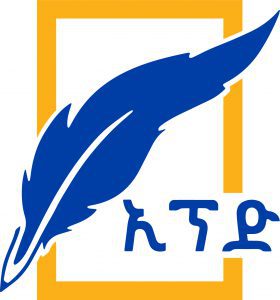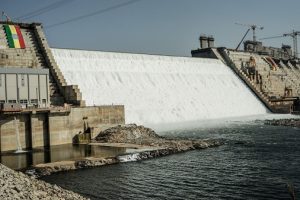
Part I
Let me walk you through the captivating bygone days of Axum, a kingdom filled with special inspiration that touched world civilization as a beacon of innovation, faith, and global interconnectedness in antiquity. I am not a historian, and forgive my slip on details if any exist in my presentation. It is obvious that civilisations do not rise by chance.
There may exist a unique pivot that serves as a springboard for ancient Axum and modern Dubai to appear in unique historical but similar stages. This parallel inheritance wielded a unique influence that impacted world antiquity. Both civilizations turned their greatest challenge (geographical and other natural hostility) into a signature of the perpetual excellence which underpins wonders that transcend their time and boundaries.
It is well well-known story that Aksum thrived between the 1st and 7th centuries, controlling port of Adulis, which was located on the Red Sea, as the kingdom’s gateway to international trade where merchants flocked from Egypt, Greece, and the Middle East to acquire ivory, gold, incense, and exotic animals. This kingdom’s strategic location in the Horn of Africa made it a hub for commerce, connecting Rome, Persia, India, Arabia and the Mediterranean and others from the west. But the Axum obelisk still stands as being single stone carved, boasting a second-to-none height in the world.
Dubai of the Emirati, a 21st century metropolis, on the other hand, is a parallel that reveals a unique hub that dominates Persian Gulf trade, connecting Europe, Asia, Africa, and the Americas. Many others with their city architectural marvels, including the world’s tallest Burj Khalifa building, a parallel to the then Axum obelisk stela, and the palm tree wonder standing on the desert island. Jebel Ali Port (the world’s largest man-made harbour, being an addition)
Ancient Axum of the Ethiopian kingdom and modern Dubai of the Emirates reveal fascinating parallels at commercial and cultural crossroads, despite being separated by 2,000 years. These two different world hubs mirror each other, exhibiting parallel wonders that break the time stretch difference with a striking contrast of the wonderful human achievement of their own time. Both leveraged coastal access to become gateways between continents. Axum dominated trade routes linking Africa, Arabia, India, and the Mediterranean via the Red Sea, while Dubai Controls trade routes connecting Europe, Asia, Africa, and the Americas via the Persian Gulf.
During Axum time, sea and land routes were busy extended to the Nile and inner Africa while Air routes via Dubai International Airport happens to be world’s busiest for international travel in its surrounding proves similarities and contrasts that highlight their shared legacy as global hubs of trade which brilliantly shows how human achievement repeats in cycles, even across 2,000 years.
Axum’s monumental stelae prominence, being highlighted alongside the present global icons like Dubai Burj Khalifa, Palm Islands, elevates the subject beyond simple contrasts. It bridges human experiences across different eras. The cultural alchemy of how they both absorbed foreign influences without losing identity, Axum’s with Judaic-Christianity vs. Dubai’s with Islamic values, balances development with cultural continuity. It is noteworthy how both cities, centuries apart in their rise, reflect a similar resilience in adapting to external influences without being overshadowed.
Axum’s obelisk stelae and Dubai’s skyscrapers like Burj Khalifa are both daring declarations of human effort in unforgiving environments. These monuments transcend mere architecture; they are testaments to human ingenuity, determination, and the alchemy of transforming hostile landscapes into gravitating centres of power and wonder. It is a showcase that sheer human effort, coupled with natural endowment, can turn a barren desert and difficult geographical terrain into centres of gravity through determination.
Axum’s stelae were obituary marks for elites, but they are also positive promotions that assert the kingdom’s wealth, technological ability, and state favour to show rival empires like Rome and Persia a timeless sign of know-how. Dubai’s skyline, on the other hand, is a modern-day vertical empire that advertises economic dominance and, futuristic vision. Axum and Dubai are symbols of power & prestige by their own parallel in defiance of geographical and natural limitations in their own territories.
Axum’s stelae and Dubai’s skyscrapers share many parallels. They both pushed the boundary of innovation to a new stage. Axum (4th century AD) in the Aksumite Kingdom erected towering obelisk-stelae (up to 33m tall, 160+ tons of stones) in the uneven highlands of Ethiopia, carved, transported, and raised without modern machinery, defying environmental hostility. Emirates, on the other hand, changed one’s written off as good for good-for-nothing desert land into to vibrant tourist attraction to be a source of revenue and world wonder.
Axum’s accomplishment required mastery of engineering, labour coordination, and sheer willpower in a difficult, rugged terrain that showed the world what can be achieved by human effort at an earlier time. In contrast UAE today in Dubai’s islands mesmerised the world with the construction of Palm trees Islands in the sea of the difficult desert land boundary with no natural fresh water or resources, bewildering the world with artificial land creation, seawater desalination, and cutting-edge materials science.
Axum’s Innovations, advanced stone-carving techniques (false-door designs, multi-story monoliths). Logistical genius in moving steles (possibly using ramps, rollers, and elephant power). Dubai’s engineering marvels, like the Burj Khalifa’s buttressed-core design helped to withstand desert winds, and the Palm Islands’ land reclamation, moving millions of tons of sand and stone to mimic a palm tree, are nothing short of extraordinary efforts. These achievements in both places testify matchless push on technological boundaries of their own time.
The rooted Axumite tradition still furnishes the Ge’ez language and script to the Ethiopian Orthodox Church in particular and the world at large and claims to safeguard the Ark of the Covenant in Axum’s Church of St. Mary of Zion. Discussing parallel analogy, one cannot shy away from telling about the fact that Aksum was also the first African country to mint its own coins—in gold, silver, and bronze—all in the standard weight categories. The obelisk Stela is a showcase of the pursuit of excellence, which underpins every aspect of advanced stone-carving techniques, long before the discovery of metallurgy tools production of steel materials that shaped many marvels output today.
These towering obelisks are not just relics of the past; they are testaments to Axum’s engineering genius, spiritual depth, and royal grandeur. This record-breaking obelisk tower fell during or after erection, possibly due to structural stress or an earthquake. Its ruins remain a haunting spectacle which compels further research.
One stele was looted by Mussolini’s forces in 1937 and returned to Ethiopia in 2005 after decades of diplomatic struggle. This is a sign of colonial plunder and cultural restitution. The Obelisk of Axum, looted by Mussolini’s forces in 1937, stood in Rome for nearly seven decades before its return to Ethiopia in 2005.
BY GEZACHEW WOLDE
THE ETHIOPIAN HERALD THURSDAY 19 JUNE 2025





